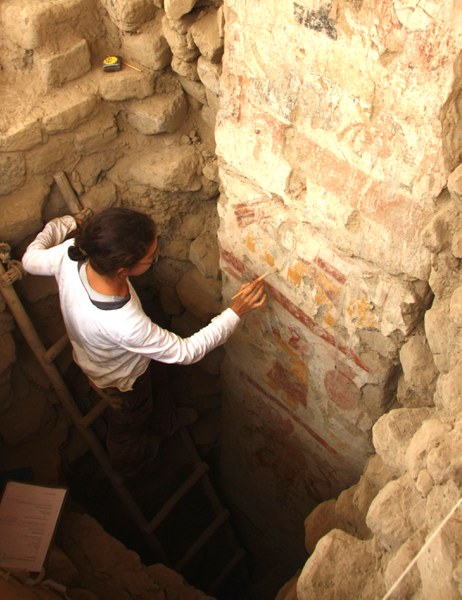In 2010, Dumbarton Oaks Research Library and Collection inaugurated a new pre-doctoral fellowship scheme, the William R. Tyler Fellowships. Eligible applicants are Harvard graduate students working on dissertations in art history, archaeology, history, or literature of the Pre-Columbian or Mediterranean/Byzantine worlds. Lisa Trever, the fourth of our incoming Tyler Fellows, is a Pre-Columbianist studying Moche murals. She writes:
"My dissertation project is an art historical study of the mural paintings found within the adobe temples of the late Moche center of Pañamarca (c. 600–900 CE), located on the north-central coast of Peru. Mine is a contextualized study of the relationships between painted images and architectural spaces that includes mural paintings known since the mid-twentieth century and others discovered by my dissertation fieldwork. Continued analysis in 2011–12 focuses on visual and stratigraphic analysis of the multiple, superimposed layers of painting observed on temple walls as well as residue analysis of liquids splashed on the walls as libations. The paintings of Pañamarca form part of an ancient Moche visual and ritual tradition wherein mimesis and pictorial narrative were central representational concepts. I ground this study in a discussion of the philosophical foundations of mimesis, both in the west and as might be recovered from visual and material evidence that underscores the importance of corporeality and embodiment in ancient Moche artistic and ritual practice. I interpret the Pañamarca paintings as images to be seen, experienced, and physically engaged with in real social spaces and during different moments in time. In particular this study analyzes the phenomenological effects and performative capabilities of canonical Moche mural paintings within the site’s Ceremonial Plaza, Platform II, and newly discovered Recinto de los Pilares Pintados. These temple paintings served to model ritual behavior and embody religious doctrine as they effectively participated in the instantiation of the late Moche presence at the southern frontier.

